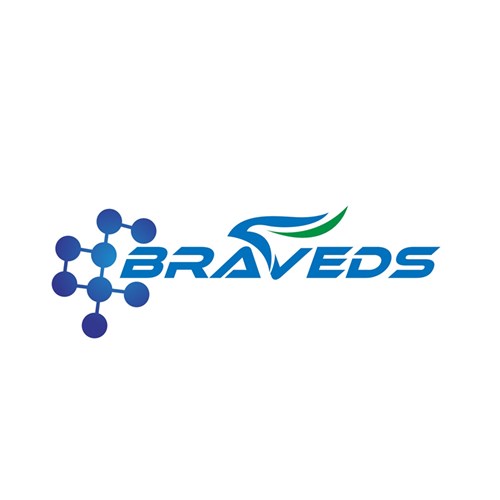S12 surfactant/IGEPAL CA-210_General reagent_Biochemical reagents_Products_Shenzhen Braveds Biotech co.,Ltd.
Non-ionic, excellent dispersion, diffusion, wetting and emulsification in water, film-forming. Acid and alkali resistant.
Action mechanism
Emulsification and dispersion
Non-ionic surfactants: By reducing the interfacial tension between the aqueous phase and the organic phase (such as lipids, oil-soluble substrates), a stable O/W (oil-in-water) emulsion is formed to prevent the composition from delamination or precipitation.
Film formation: Hydrophobic protective film can be formed on the microporous plate, the inner wall of the reaction tube or the surface of the sample to prolong the stability of the active ingredient of the reagent.
Acid and alkali resistance stability
It remains active under strongly acidic (pH < 2) or strongly alkaline (pH > 12) conditions and is suitable for detection procedures requiring extreme pH conditions (such as preparation of viral lysate).
Wetting and penetration enhancement
Improve the spread of reagents on the surface of hydrophobic materials (such as plastic microplates, test strips), improve the uniformity of reaction.
Application scenario
immunoassay
Cell lysate: Gently lysates cell membranes to release antigens while avoiding protein denaturation (such as viral antigen extraction in ELISA).
Sealer/diluent: Reduce non-specific adsorption and lower background signal.
Molecular diagnosis
Nucleic acid extraction: assisted lysis of cell membrane or viral envelope to improve the efficiency of DNA/RNA release.
PCR pretreatment: eliminate the interference of lipids in the sample and improve the specificity of amplification.
Biochemical detection
Enzymatic reaction system: stable hydrophobic substrate (e.g. lipid substrate in cholesterol oxidase assay).
Microfluidic chip: as a lubricant to reduce liquid flow resistance and prevent bubble interference.
Point-of-care Detection (POCT)
Strip coating: Improve the diffusion rate of the sample on the nitrocellulose film, shorten the detection time.
Usage amount
Cell lysate: 0.1%-1% (subject to verification of compatibility with target proteins).
Sealer/diluent: 0.05%-0.5%.
Nucleic acid extraction: 0.5%-2% (in combination with protease K).
Enzymatic reaction system: 0.01%-0.1% (avoid inhibiting enzyme activity).
Dissolution method
Direct dissolution: Stir dissolved in water or buffer at room temperature, if necessary, heating to 40-50℃ to accelerate dissolution.
Premixed storage: It is recommended to prepare 10%-20% reserve liquid to avoid long-term storage stratification.
Matters needing attention
Keep in a cool and dry place (15-25 ° C is recommended) to avoid degradation caused by high temperature or light.
Long-term storage may be stratified, shake well before use.
Temperature sensitivity: High temperature (>60℃) may destroy the emulsification performance, it is recommended to prepare at low temperature.
Oxidation risk: Avoid direct mixing with strong oxidants (such as high concentrations of persulfate).
Plastic containers: long-term contact may swell polystyrene (PS) or polycarbonate (PC), it is recommended to use short-term or use glass containers.
Protein interference: excess may adsorb antibodies or antigens, and the concentration needs to be optimized through pre-experiments.
incompatibility
Cationic surfactants: may precipitate due to charge neutralization and should be avoided.
High salt system: may reduce the emulsification efficiency, need to adjust the concentration or add stabilizer.
Q&A
Q: Why is IGEPAL CA-210 suitable for viral lysate?
A: Its non-ionic properties can gently destroy the viral envelope to release antigens, while retaining the antigen immunogenicity to avoid false negative results.
Q: Is milky white turbidity normal after use?
A: It may be caused by incomplete emulsification or pH mutation of the system. It is necessary to check the dissolution conditions or adjust the pH of the buffer to neutral.
Q: Can it replace Triton X-100 for cell permeability?
A: Yes, but the concentration needs to be verified (usually a lower concentration is required for IGEPAL CA-210), and the extraction efficiency may vary for some membrane proteins.
Q: Does it interfere with fluorescence detection?
A: Low concentration (<0.1%) has no significant effect, but high concentration may cause light scattering interference due to film formation, and the dosage needs to be optimized.
Q: Does it apply to samples containing serum?
A: Validation required, as lipoproteins in the serum may compete for emulsification, additional stabilizers (such as BSA) are recommended.
bio-equip.cn




